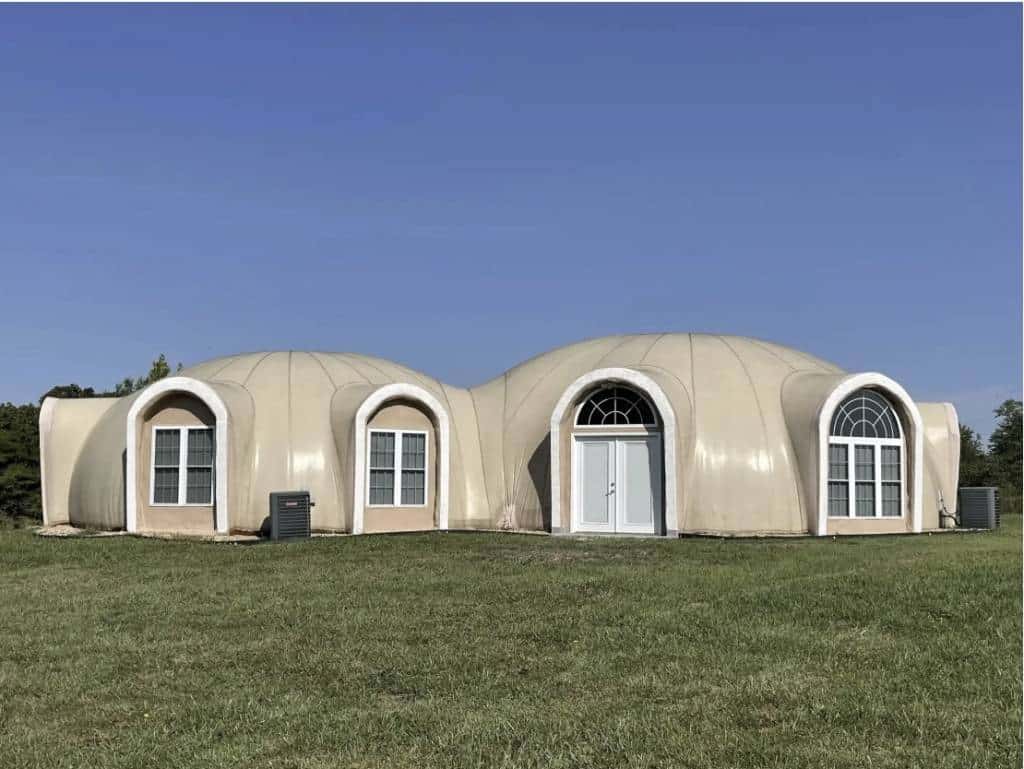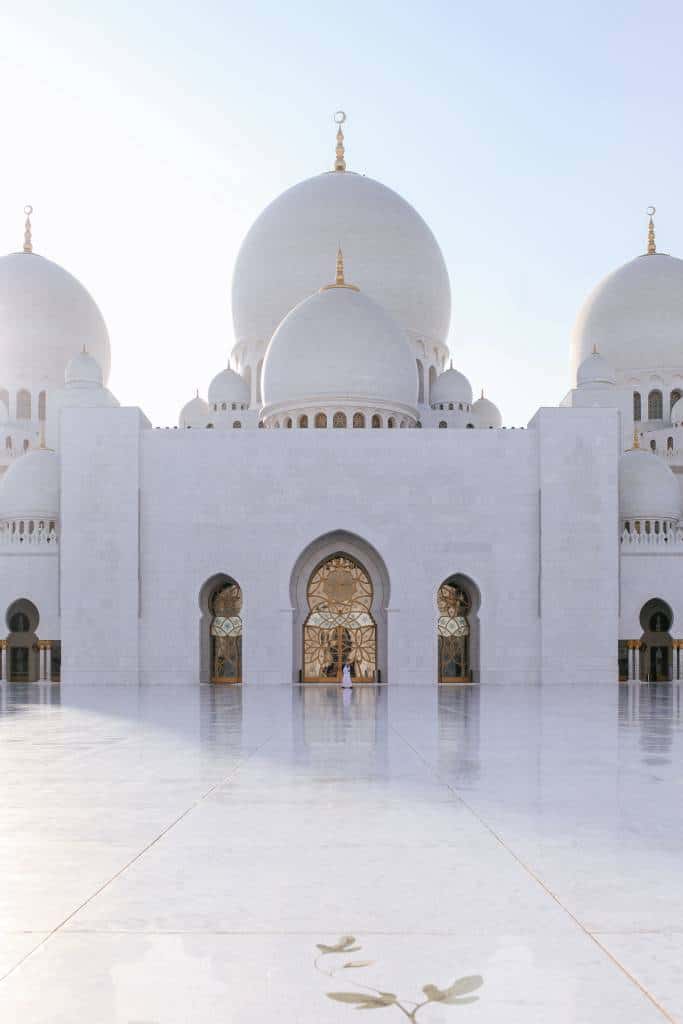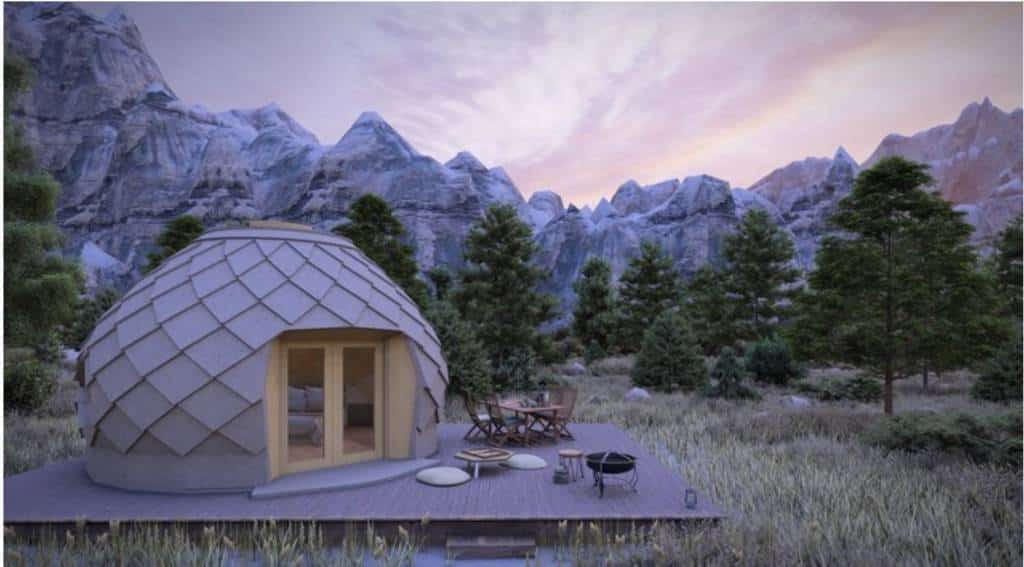Geodesic Domes have endured through the ages and still hold our attention when it comes to architectural buildings
The dome architecture has been demonstrated to be a flexible and effective design in everything from ancient civilizations to contemporary architecture. The dome buildings have established themselves as flexible and effective shape that highlights human skill and workmanship, from ancient civilizations to the current architecture. A dome architecture is fundamentally a structural component that has the appearance of a hollow hemisphere or half-sphere. It is a three-dimensional geometric form that encloses a specific space, like a canopy or a vaulted ceiling. A dome architecture design makes it possible for forces to be distributed equally, resulting in a self-supporting structure that can bear heavy loads. This article will define a dome, study several forms of domes, examine its many uses, and emphasize its many advantages.
What is a Geodesic Dome?
The form of a hollow hemisphere or half-sphere is similar to that of a dome, which is a structural component. A dome building is a three-dimensional geometric shape with an all-perpendicular curving surface that radiates outward from a central point, forming a symmetrical, rounded structure. Since the beginning of recorded history, dome technology has been employed in buildings and may be seen in many different societies and eras. Observatories, stadiums, religious complexes, and even residential constructions have all been built using dome architecture. For their durability and stability, dome buildings are renowned, the dome building can withstand external forces like wind and gravity because of the evenly distributed weight provided by the curved design. Domes can be built out of anything from stone and brick to concrete and contemporary structural elements, depending on the area and time period.The Pantheon, an Italian structure from the second century AD, is one of the most well-known examples of a dome. With an oculus (a circular hole) at the top, it has a large, unsupported concrete dome that lets natural light inside the structure. Domes are still utilized in architecture today for both aesthetic and functional reasons, they may provide a structure with a distinctive aesthetic appeal and are frequently connected with majesty and beauty. Dome buildings can also be functionally advantageous by increasing interior space, improving acoustics, or effectively covering enormous regions. Explore additional information about domes by visiting https://domespaces.com/dome-homes-new-affordable-homes/.

Image Credit: Insider.
https://www.insider.com/dome-home-missouri-sale-science-fiction-inspired-photos-2023-2
History of Geodesic Domes
Dome technology has a long history that includes many different cultures and architectural eras. Around the world, dome buildings have been utilized for a wide range of reasons, including religious, monumental, and utilitarian ones. Here is a synopsis of the development of dome architecture over time:
Ancient Near East : The Sumerian, Assyrian, and Babylonian civilizations, as well as Mesopotamia (modern-day Iraq), are where the dome’s roots may be found. The earliest domes that have been discovered date to the third millennium BCE. These ancient domes, which were built with mud bricks, were frequently utilized as tombs or burial chambers.
Classical Antiquity : The Greeks and Romans made considerable improvements to the dome architecture. Greek architects produced the corbelled dome, also known as the beehive dome, by piling stone blocks one on top of the other until they met at the top. The Treasury of Atreus, which was constructed in Mycenae, Greece, circa 1250 BCE, is the most well-known example of this style of dome. Contrarily, the Romans developed the real arch and refined the use of concrete, enabling the construction of larger and more ornate dome buildings. The Pantheon in Rome, finished in 125 CE, is the most famous Roman dome and one of the best-preserved ancient structures in existence.
Byzantine Empire : Dome architecture was essential to Byzantine ecclesiastical design from the fourth to the fifteenth centuries CE. The pendentive dome, invented by Byzantine architects, made it possible to build substantial domes on square or polygonal bases. The Hagia Sophia in Istanbul, Turkey, is the most well-known example of a Byzantine dome building. It was constructed in the sixth century CE and has a huge central dome that served as a prototype for other domed buildings.
Islamic Architecture : Mosque designs have a strong legacy of dome construction in Islamic architecture. One of the first and most important examples of an Islamic dome is the Dome of the Rock in Jerusalem, which was finished in 691 CE. Another innovation made by Islamic architects was the use of muqarnas, a beautiful vaulting system, to shift from square or polygonal bases to circular or octagonal domes. Islamic dome buildings include the Taj Mahal in Agra, India, and the Alhambra in Granada, Spain.
Renaissance and Baroque Periods : Domes in architecture saw an increase in Europe throughout the Renaissance and Baroque periods (15th to 18th century). A masterwork of Renaissance engineering, the dome of Florence Cathedral was created by Filippo Brunelleschi and finished in 1436. Domes evolved into enormous, extravagant structures throughout the Baroque era, reflecting the period’s enthusiasm. A prominent example of Baroque dome architecture is the enormous Michelangelo-designed dome of St. Peter’s Basilica in Vatican City.
Modern and Contemporary Architecture : Domes have continued to develop in modern and contemporary architecture. Larger and riskier dome structures may now be built thanks to improvements in structural engineering and materials. The geodesic dome designed by Buckminster Fuller, which gained popularity in the middle of the 20th century, showed the possibility of thin and effective dome constructions. Modern architects have experimented with novel dome forms, frequently including eco-friendly and sustainable elements.
Types Of Geodesic Domes
Listed below are a few popular dome designs:

Geodesic Dome: A geodesic dome is a self-supporting structure consisting of interconnecting triangles. These domes have become recognized for their durability and effectiveness in uniformly dispersing pressure. This style of dome was made popular by Buckminster Fuller, and they are frequently used for greenhouses, exhibition halls, and even residential buildings.
Monolithic dome: A monolithic dome is an uninterrupted, single shell built of reinforced concrete. It has earned a reputation for its resilience to natural calamities, durability, and energy effectiveness. Due to its superior insulating qualities, monolithic domes are perfect for a variety of settings, including sports venues, educational institutions, religious buildings, and storage facilities.
Skeletal Dome: Skeletal domes are identified by an internal system of ribs or frames that supports the dome’s form. This kind of dome allows for architectural versatility and may be built with a variety of materials, such as steel, wood, or even airy textiles. Skeletal domes are frequently employed as temporary buildings, event locations, and exhibition spaces.
These are only a handful of the numerous varieties of domes that may be found worldwide. Depending on the architectural, cultural, and historical context in which they are utilised, domes can have a variety of sizes, shapes, and construction materials.

Image Credit: Zomes.
https://www.zomes.com/blog/pros-cons-dome-homes
Benefits of Geodesic Domes
Dome buildings provide a number of advantages in a variety of circumstances, including those related to architecture, the environment, science, and practicality. Domes provide the following advantages:
- Structural Stability: Domes are naturally sturdy constructions because of their curved design. The structure is resistant to external pressures like wind and snow loads because the curve uniformly distributes the forces applied to it. Dome architecture is more resilient to earthquakes and other natural calamities than conventional box-shaped structures.
- Efficient Space Utilization : Dome buildings offer an effective use of interior space. Compared to typical constructions with straight walls, its rounded design minimizes unused corner space, allowing for greater useable floor area. Applications including event rooms, sports stadiums, exhibition halls, schools, and living areas may all benefit greatly from this capability.
- Enhanced Solar Lighting: The rounded form of dome technology enables efficient natural lighting. The large surface area allows sunlight to enter, which reduces the demand for artificial illumination during the day. This not only uses less energy but also makes a cozy and welcoming environment.
- Energy Efficiency: Dome architecture has great thermal insulating qualities. Energy efficiency is increased since there is less heat transfer because there is less surface area than in conventional structures. Dome technology can maintain pleasant temperatures with a lower dependence on cooling and heating systems, thereby lowering energy costs and having a less negative impact on the environment.
- The versatility of Design: Dome buildings are extremely versatile and may be altered to fit a variety of architectural styles and functions. They may be built in a variety of sizes, from little garden huts to massive geodesic domes. The design’s adaptability enables innovative and distinctive architectural solutions.
- Cost-Effectiveness: Depending on the materials used, building expenses for dome buildings maybe even less expensive than those for conventional structures. Long-term cost reductions are facilitated by the effective utilization of space and lower energy demands. Domes’ strong structural stability also frequently results in less frequent maintenance and longer lifespans.
- Benefits for Sounds: In some situations, the form of a dome technology might be advantageous for acoustics. In order to reduce echoes and improve sound quality, the curved surfaces aid in the uniform distribution of sound waves. Because of this quality, domes are ideal for music halls, theaters, and other locations where ideal acoustics are sought.
- Environmental Sustainability: Domes’ energy-saving characteristics, less material use, and little environmental effect make them compatible with sustainability objectives. They become even more environmentally friendly due to the use of recyclable and renewable materials as well as the possible incorporation of green technology like solar panels.
- Rapid Construction: In some circumstances, domes may be built more quickly than using conventional building techniques. Pre-fabricated dome structures may be put together on-site, cutting down on construction time and expenses. This benefit may be especially useful for temporary buildings or emergency shelters that are required in an emergency.
- Iconic and Aesthetic Appeal: Domes frequently have a visually arresting and distinctive aspect that attracts attention and stands out in landscapes. They may help a building look more appealing architecturally and become a landmark or object of interest because of their distinctive shape and design.
It’s important to keep in mind that the precise advantages of domes and dome technology might change based on their design, construction, and intended use. Find out more about domes by reading the content available at: https://domespaces.com/hardshell-domes-a-futuristic-and-resilient-shelter-solution/.
In conclusion, domes are an excellent investment in modern architecture because of their timeless appeal and wealth of advantages. Domes offer a structurally solid solution that can endure a variety of environmental conditions because of their excellent strength. Their energy efficiency also helps with sustainable design strategies, minimizing the environmental effect of the construction. The adaptability of the dome technology design enables the creation of imaginative and distinctive buildings that may be used for a variety of functions, including houses, sports facilities, and religious structures. Additionally, domes are a desirable solution for projects with restricted finances because of their cost-effectiveness. Overall, domes continue to alter the architectural environment thanks to their long history and constant innovation, assuring their continued importance and influence in the years to come.

